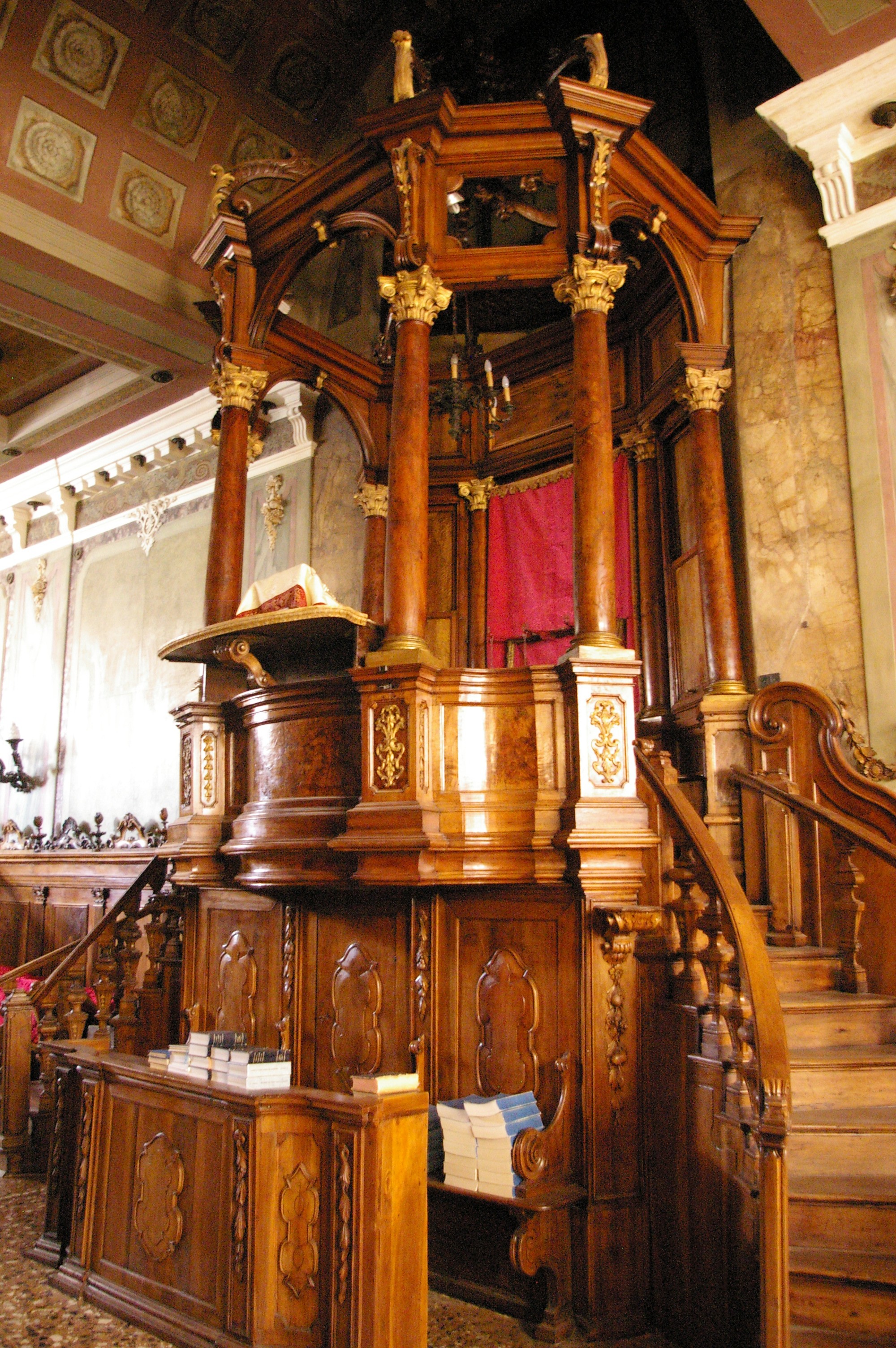Padua Synagogue on:
[Wikipedia]
[Google]
[Amazon]

 The Italian
The Italian
Synagogue
A synagogue, ', 'house of assembly', or ', "house of prayer"; Yiddish: ''shul'', Ladino: or ' (from synagogue); or ', "community". sometimes referred to as shul, and interchangeably used with the word temple, is a Jewish house of worshi ...
of Padua
Padua ( ; it, Padova ; vec, Pàdova) is a city and ''comune'' in Veneto, northern Italy. Padua is on the river Bacchiglione, west of Venice. It is the capital of the province of Padua. It is also the economic and communications hub of the ...
is the only synagogue still in use of the several that flourished in the university town
A college town or university town is a community (often a separate town or city, but in some cases a town/city neighborhood or a district) that is dominated by its university population. The university may be large, or there may be several smal ...
of Padua from the Renaissance
The Renaissance ( , ) , from , with the same meanings. is a period in European history marking the transition from the Middle Ages to modernity and covering the 15th and 16th centuries, characterized by an effort to revive and surpass ideas ...
through World War II
World War II or the Second World War, often abbreviated as WWII or WW2, was a world war that lasted from 1939 to 1945. It involved the vast majority of the world's countries—including all of the great powers—forming two opposin ...
.
The Italian Synagogue was built in 1584.Sacerdoti, Annie, Guide to Jewish Italy, Rizzoli, New York, 2003, 2004 English edition, pp. 74-7Brandes, Francesca, Venice and Environs, Jewish Places, history and art, 1997, Marsilio, New York, Jewish Padua, pp. 56-75
The synagogue underwent renovation
Renovation (also called remodeling) is the process of improving broken, damaged, or outdated structures. Renovations are typically done on either commercial or residential buildings. Additionally, renovation can refer to making something new, ...
and/or restoration
Restoration is the act of restoring something to its original state and may refer to:
* Conservation and restoration of cultural heritage
** Audio restoration
** Film restoration
** Image restoration
** Textile restoration
* Restoration ecology
...
in 1581, 1631, 1830, and 1865. It was closed in 1892 when the community built a modern synagogue, but reopened after the war because in 1943 fascists
Fascism is a far-right, authoritarian, ultra-nationalist political ideology and movement,: "extreme militaristic nationalism, contempt for electoral democracy and political and cultural liberalism, a belief in natural social hierarchy and th ...
burned the modern synagogue.
The synagogue is located at 9 Via San Martino and Solferino in the historic ghetto. It is in the same building as the offices of the . Students visiting the university are welcome to pray with the congregation. Visitors can see the synagogue by contacting the Jewish community.
The baroque
The Baroque (, ; ) is a style of architecture, music, dance, painting, sculpture, poetry, and other arts that flourished in Europe from the early 17th century until the 1750s. In the territories of the Spanish and Portuguese empires including t ...
synagogue measures 18 by 7 meters. As is usual in Italian synagogues, the Bimah and Torah Ark
A Torah ark (also known as the ''Heikhal'', or the ''Aron Kodesh'') refers to an ornamental chamber in the synagogue that houses the Torah scrolls.
History
The ark, also known as the ''ark of law'', or in Hebrew the ''Aron Kodesh'' or ''aron ha- ...
are located at opposite sides of the room, with the space in between left vacant to accommodate the processional. What is unusual about the synagogue at Padua is that the Ark and Bimah are placed on the synagogues's long walls.
The baroque, sixteenth century Torah Ark is made from the wood of a plane tree
''Platanus'' is a genus consisting of a small number of tree species native to the Northern Hemisphere. They are the sole living members of the family Platanaceae.
All mature members of ''Platanus'' are tall, reaching in height. All except f ...
that was struck down by lightning in the University's famous botanical garden. It features gilded doors, four Corinthian columns made of black marble with white veining, and carved foliage. The balduchin is in the form of a broken pediment.
The "majestic" Bimah is reached by a curved flight of eight steps on each side. It features an octagonal balduchin supported by four columns and four pilasters (two projecting form the wall.) The Corinthian capitals
The Corinthian order (Greek: Κορινθιακός ρυθμός, Latin: ''Ordo Corinthius'') is the last developed of the three principal classical orders of Ancient Greek architecture and Roman architecture. The other two are the Doric order w ...
of the pillars and pilasters are gilded. Elaborate baroque carvings surmount the balduchin.
The ceiling is coffered
A coffer (or coffering) in architecture is a series of sunken panels in the shape of a square, rectangle, or octagon in a ceiling, soffit or vault.
A series of these sunken panels was often used as decoration for a ceiling or a vault, also c ...
and painted. The area between the Torah Ark and Bimah is a coffered barrel vault
A barrel vault, also known as a tunnel vault, wagon vault or wagonhead vault, is an architectural element formed by the extrusion of a single curve (or pair of curves, in the case of a pointed barrel vault) along a given distance. The curves are ...
, with large, heavily-carved baroque rosettes in each recess.
The historic women's gallery
The Women's Gallery was a collectively established and run art gallery in Wellington, New Zealand, showing only the work of women, that ran for four years between 1980 and 1984.
History
In 1977, artist Joanna Paul developed a project called " ...
is upstairs. Today, the synagogue has a women's section on the main floor.
References